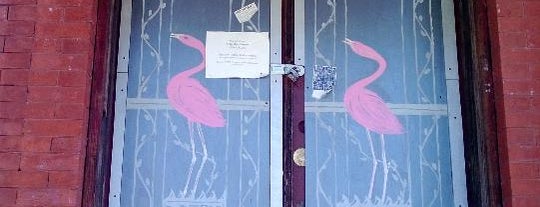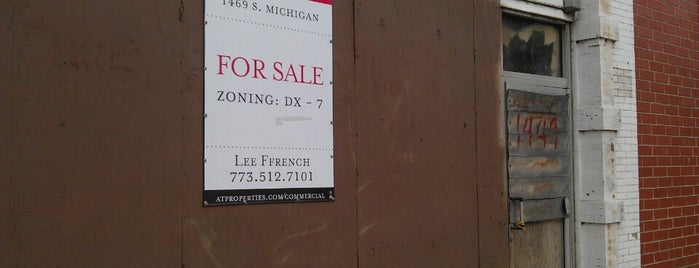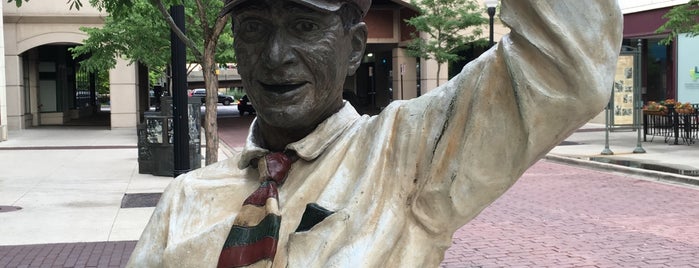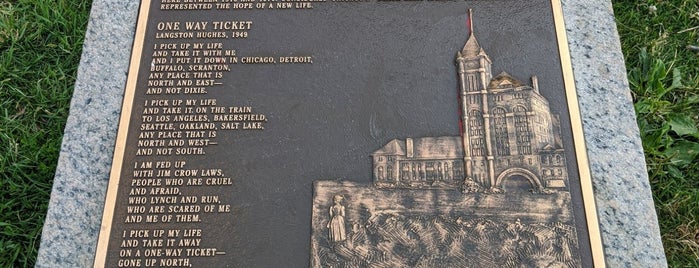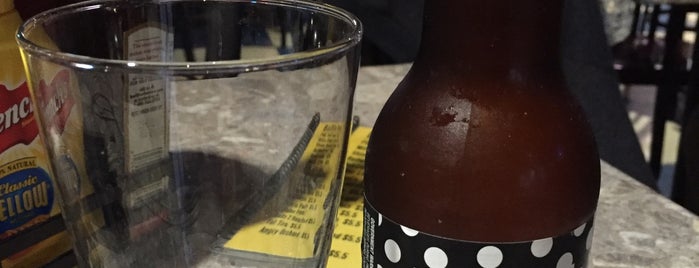![]() Demo tapes were cleverly tested here at the original Chess Records offices by blaring music outdoors to folks waiting for the bus at the corner and seeing if they started grooving to the beat. Leggi tutto.
Demo tapes were cleverly tested here at the original Chess Records offices by blaring music outdoors to folks waiting for the bus at the corner and seeing if they started grooving to the beat. Leggi tutto.
![]() Blues legend Muddy Waters bought this place where Howlin’ Wolf and other musicians used to stay. When it got too hot to play indoors, neighbors were often treated to a jam session on the front porch. Leggi tutto.
Blues legend Muddy Waters bought this place where Howlin’ Wolf and other musicians used to stay. When it got too hot to play indoors, neighbors were often treated to a jam session on the front porch. Leggi tutto.
![]() You might recognize this mural created for the filming of the original Blue Brothers movie, where Ray’s Music Exchange stood. It remains today as a testament to the blues’ Chicago roots. Leggi tutto.
You might recognize this mural created for the filming of the original Blue Brothers movie, where Ray’s Music Exchange stood. It remains today as a testament to the blues’ Chicago roots. Leggi tutto.
![]() One of the most important sites in blues history, nearly every blues great passed through here when it was home to Chess Records. The building now houses the Blues Heaven Foundation. Leggi tutto.
One of the most important sites in blues history, nearly every blues great passed through here when it was home to Chess Records. The building now houses the Blues Heaven Foundation. Leggi tutto.
![]() Situated on this stretch of the former ‘record row,’ Vee-Jay Records was the largest, most successful R&B label of its time, and recorded blues greats like Jimmy Reed, John Lee Hooker and others. Leggi tutto.
Situated on this stretch of the former ‘record row,’ Vee-Jay Records was the largest, most successful R&B label of its time, and recorded blues greats like Jimmy Reed, John Lee Hooker and others. Leggi tutto.
![]() Maxwell Street was once home to a bustling street market, and a place to hear many of the first great blues musicians, new arrivals from the South who would set up at a street corner and jam. Leggi tutto.
Maxwell Street was once home to a bustling street market, and a place to hear many of the first great blues musicians, new arrivals from the South who would set up at a street corner and jam. Leggi tutto.
![]() Two granite blocks mark the former spot of the Illinois Central Depot, or the Black Ellis Island, where 1000s of southern African Americans arrived to start new lives in Chicago - the Promised Land. Leggi tutto.
Two granite blocks mark the former spot of the Illinois Central Depot, or the Black Ellis Island, where 1000s of southern African Americans arrived to start new lives in Chicago - the Promised Land. Leggi tutto.
![]() Local and international legends play here, and Buddy Guy himself graces the stage of his authentic blues club, where memorabilia like B.B. King and John Lee Hooker’s guitars complete the atmosphere. Leggi tutto.
Local and international legends play here, and Buddy Guy himself graces the stage of his authentic blues club, where memorabilia like B.B. King and John Lee Hooker’s guitars complete the atmosphere. Leggi tutto.

